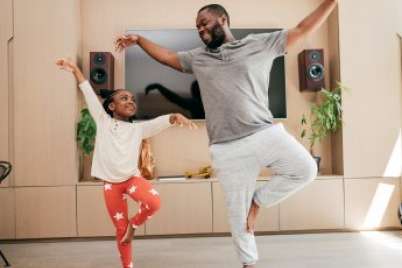
Is it time for pediatricians to prescribe physical activity?
Pediatric care specialists know that daily physical activity is essential to the good health of children. The science is clear: active play, especially outdoors, can help mitigate or even treat a whole host of health issues ranging from obesity, to fatty liver disease and prediabetes, as well as mental health concerns like attention-deficit/hyperactivity disorder (ADHD), depression, and anxiety.
Despite this knowledge, few children today actually meet the recommended guidelines for daily physical activity. One of the reasons kids don’t move much anymore is that they might not know how to move and enjoy being physically active. As a recent study highlighted, many kids today fail at basic movement like throwing, kicking, and running.
Another study reported that two-thirds of Canadian kids were not meeting age-appropriate skill development milestones. Many children today need to develop their physical literacy to get moving.
Physical literacy is merely about developing the fundamental movement skills that all children need, such as running, hopping, throwing, catching, and jumping. These movement skills in turn give kids the confidence to participate in different physical activities, sports, and games.
Read more: What is physical literacy?
Now, the American Academy of Pediatrics (AAP) is addressing this issue and recommending that doctors go further, and include physical literacy assessments and counseling as part of their clinical practice—even writing a formal prescription for physical activity, if necessary, to document what therapists, caregivers, and parents need to do to help kids get active.
Related read: 15 signs that your child is physically literate
The latest recommendations, published in the journal Pediatrics, also urge pediatricians to:
- Include physical literacy assessments as part of regular health checkups, to catch gross motor skill delays or physical activity deficits as early as possible.
- Pay special attention to children most at risk of inactivity: racial minorities, adolescent girls, children and youth with special healthcare needs, and kids living in urban or rural areas.
- Discuss the benefits of physical activity on physical and mental health, as well as social growth and development during appointments.
- Encourage parents to model a physically active lifestyle.
In addition to all that, the AAP is also encouraging physicians to refer families to tools and resources to build physical literacy, and is advocating for childcare centres, preschools, schools, communities, and families to encourage kids to be active throughout the day, “anywhere kids live, learn and play.”
Physical activity is a potent “medicine” in the prevention and treatment of disease and promotion of health and wellness.
If you’re wondering what you can do to ensure your child is physically literate and gets a healthy amount of vigorous activity every day, here are the key points for parents and educators spotlighted in the report:
- Active, free play outside, every day, is the best way for children to become physically literate.
- Organized sports are unnecessary for very young children, but can help older kids sharpen their skills and stay active.
- Participation in a variety of activities and sports is better for young kids than specializing in just one. Gymnastics, swimming, and track were highlighted as being particularly good at developing physical literacy by building fundamental movement skills.
- In schools, physical education programs should focus on promoting a love of movement and skill development.
- Schools can play a pivotal role in increasing children’s overall levels of daily physical activity, and should provide opportunities for children to get up and move before, during, and after school.
- Active classrooms and playtime at recess are linked with improvements in behaviour as well as health; withholding recess time or active play time as a punishment for poor behaviour is not recommended.






In it, AAP officials encourage pediatricians to go beyond simply recommending that kids get exercise and take the step of actually issuing a prescription for physical activity.